Family photo album – B K Chatterji
Category:
Pulok Chatterji was born in 1951. He completed his schooling in Bombay (now Mumbai), and studied Economics at St. Stephen's College and the Delhi School of Economics. Then, he taught Economics at St. Stephen's before being selected for the Indian Administrative Service in 1974. He retired from government service in 2011 as Executive Director, World Bank and served as Principal Secretary to Prime Minister, Dr. Man Mohan Singh till 2014.
Pulok met his future wife, Jaya Srinivasan in 1970 when they were doing their post-graduation together in the Delhi School of Economics. Pulok and Jaya were married on 25 February, 1975.
Born on November 2, 1949, Jaya did her schooling in Cairo and Kampala. She graduated with Economics Honors from Miranda House, Delhi and completed her Masters in Economics from the Delhi School of Economics. After teaching Economics for a few years in the College of Vocational Studies, Delhi, Jaya got her PhD from the Benaras Hindu University.
Jaya's professional life was subsequently devoted to the environment and social development sectors. She worked in the Society for Promotion of Wasteland Development, The Indo-Canadian Environment Facility, and the Asian Development Bank. Jaya loved her work and started and steered many innovative projects in various parts of India.
In the last seven years of her life, Jaya developed an immense interest in heritage conservation, art, and art history. She taught herself by extensive reading, visiting museums and joining courses. After retirement she did voluntary work in the National Museum, New Delhi, where she helped set up a ‘Docent' system for the first time. She also did pro-bono work in the Rashtrapati Bhavan and in the area of heritage conservation in Delhi.
Jaya passed away on 22 April, 2016.
Pulok's father, Birendra Kumar Chatterji, was born on 10 December, 1923 to Professor Khetra Pada hatterjee and Janhabi Chatterjee. The family lived in Allahabad where Khetra Pada Chatterjee was a Professor of Chemistry, and later Head of Department, in Allahabad University. The Chatterjee family was one of the leading probasi Bengali families of Allahabad.
Birendra (or, Biru as he was known to relatives and close friends) did his schooling and University education from Allahabad. He was a brilliant student in school and University. He graduated from Allahabad University with Honours in Economics, and topped his class in the University. He joined the then Imperial Bank of India (later to become the State Bank of India) in the officer grade.
He married Sadhona Bannerjee on 28 June, 1948. He had met Sadhona through her father, Hari Prasad Bannerjee, who was then a senior officer of the Imperial Bank of India.
Birendra Kumar Chatterji rose to the level of Chief General Manager of the Bombay Circle of State bank of India. Later, he was Chairman, State Bank of Saurashtra and Chairman, State Bank of Bikaner and Jaipur. He was finally appointed as the CMD of UCO Bank from where he retired in 1984. He passed away in August 1989 leaving behind his wife, a son, a daughter and grandchildren.
Pulok's mother, Sadhona Bannerjee, was born in Calcutta on 19 October, 1931. Her father, Shri H. P. Bannerjee, joined the Imperial Bank of India in 1923 or 1924, and got married soon after. Most of his fellow officers in the bank at that time were either English or Scottish. For an Indian to get into an officers' grade was not easy. It used to be a prestigious service in the British days for an Indian to be in, like the Indian Civil Service or Indian Police.
Sadhona Bannerjee did her schooling from various places including Lyallpur and Calcutta. She completed her Matriculation from Calcutta, and got married soon after at the age of 16.
Sadhona's brother Ashish, called Bhaiya was born in Shimla in August 1933. Her two sisters Bunu (Sumana) and Chhotu (Suparna) were both born in Gorakhpur, and her youngest sibling Jhunu (Sunanda) was born much later in Kolkata in February 1944.

Sanatan Chatterjee, B. K. Chatterji’s grandfather (father’s father, or Dada). Died at the age of 32. Calcutta, late 1890s
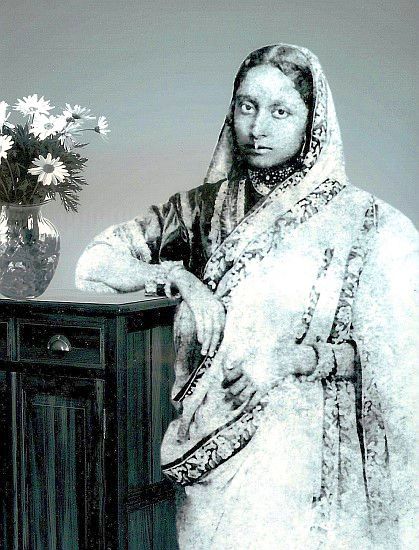
Nagendra Bala Chatterjee, BK Chatterji's Grandmother (father's mother or Dadi) who died at the age of 18 after bearing four children, the youngest of whom was K. P. Chatterji, father of B. K. Chatterji. Year unknown, but probably 1890s.
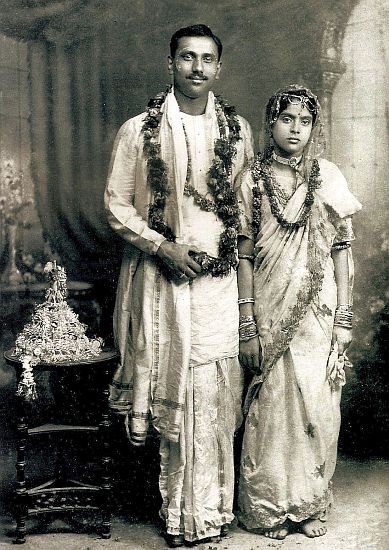
H. P. Bannerjee and Subarna, Sadhona’s parents, on their wedding day, 18 Feb, 1924.
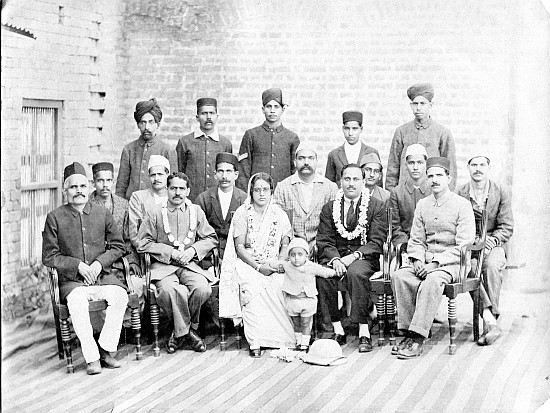
Subarna, Sadhona and H. P. Bannerjee (2nd from right, front row) with staff of Jhansi branch of Imperial Bank of India, 1932.
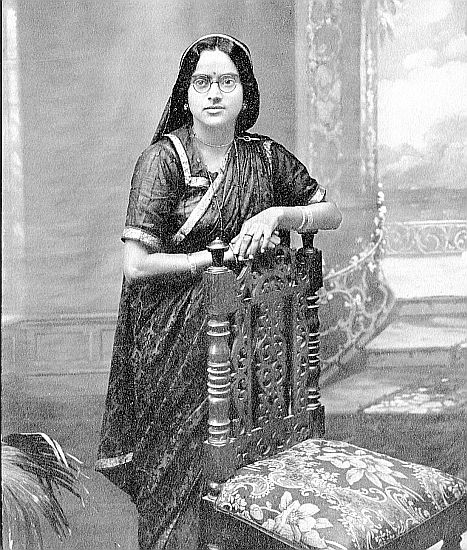
Subarna Bannerjee, my mother's mother. Early 1930s.
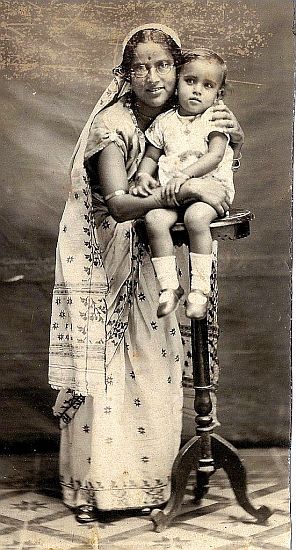
Sadhona Bannerjee, with her mother, Subarna. 1933
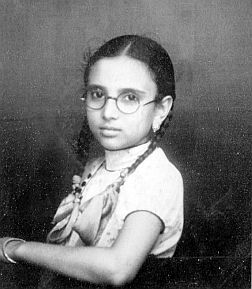
Sadhona Bannerjee. Late 1930s.
.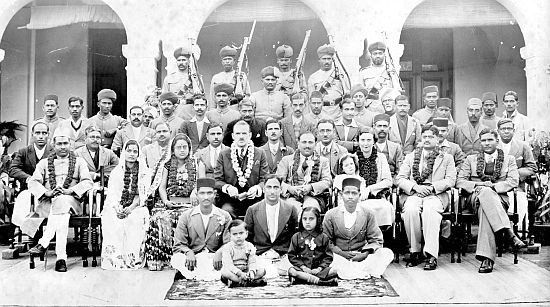
H. P. Bannerjee (seated with garland) taking over as Agent from British predecessor, Imperial Bank of India, Gorakhpur Main Branch.
Sadhona and Ashish, seated front on the ground. Subarna, seated, third from left in the first row of chairs. 1937.
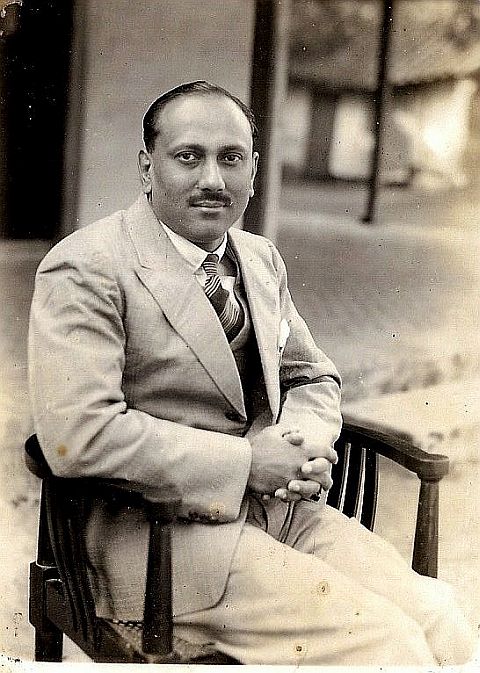
H. P. Bannerjee, mid-1930s
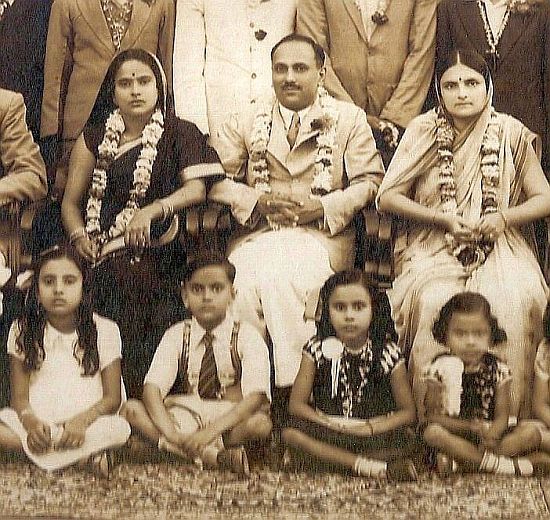
Front row, L to R: Sadhona, Ashish, Sumana, Suparna
Second row, L to R: Subarna, H.P. Bannerjee, unknown. Probably a farewell photo, 1930s.
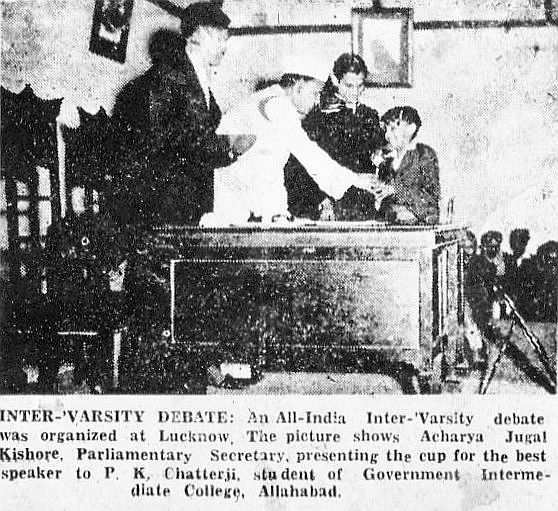
B. K. Chatterji's name mistyped as P. K. Chatterji. Year unknown. Probably late 1930s.
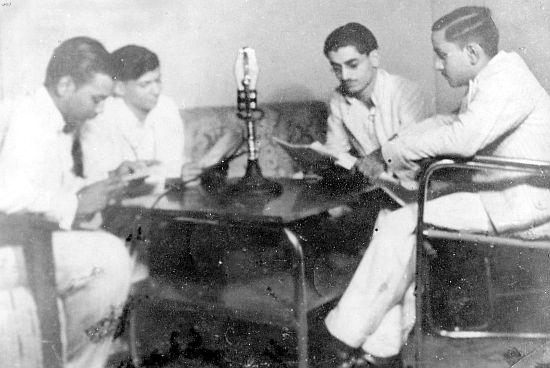
B. K. Chatterji (second from left), during the Allahabad University College debate on All-India Radio 1940-41. B. K. Chatterji won the debate.
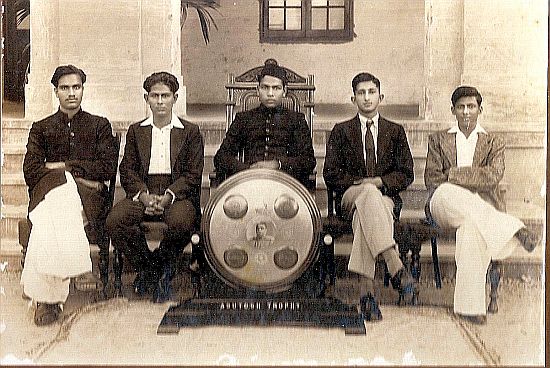
B. K. Chatterji, extreme right, with team that won Allahabad University debating Ashutosh Trophy, 1940-41.

B. K. Chatterji second from left, first row
Allahabad University Postgraduate class of 1942-43.
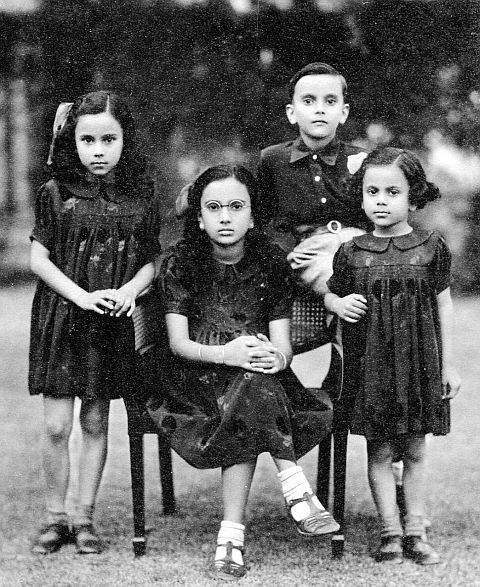
Letter written by B. K. Chatterji to his fiancé and future wife, Sadhona in 1948 soon after Mahatma Gandhi’s assassination:
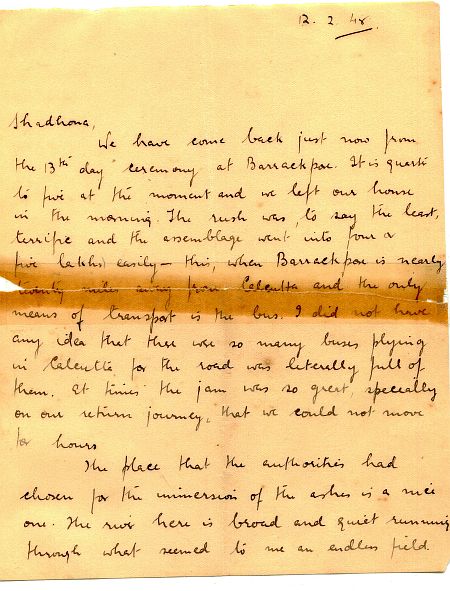
12.2.48
Shadhona,
We have just come back from the 13th day ceremony (for Gandhiji) at Barrackpore. It is quarter to five at the moment and we left our house in the morning. The rush was, to say the least, terrific and the assemblage went into four or five lakhs easily - this, when Barrackpore is nearly twenty miles away from Calcutta and the only means of transport is the bus. I did not have any idea that there were so many buses plying in Calcutta for the road was literally full of them. At times the jam was so great, specially on our return journey, that we could not move for hours.
The place that the authorities had chosen for the immersion of the ashes is a nice one. The river here is broad and quiet running through what seemed to me an endless field.

Arrangements made by the police were not bad on the whole. Vehicular traffic which included the bicycle was not allowed to proceed beyond a certain point so that all of us had to walk a long distance to come to the river frontage. It was a pleasant spectacle to see many men and women walk bare feet perhaps for the first time in their lives. I remember having seen a few who limped so markedly that, had it not been for their utterly sincere feelings for Gandhiji, they would have, it looked as if, much preferred to be lifted back to their conveyances than go an inch further. Some drank water every ten minutes though the day was on the whole cloudy. An institution by the name of Kashi Vishwanath Seva Dal was arranging for the free distribution of water.
But there were a few quite serious accidents too. I saw a lady faint before me just when she had managed to lift herself across a drainlike affair and there was no dearth of people.
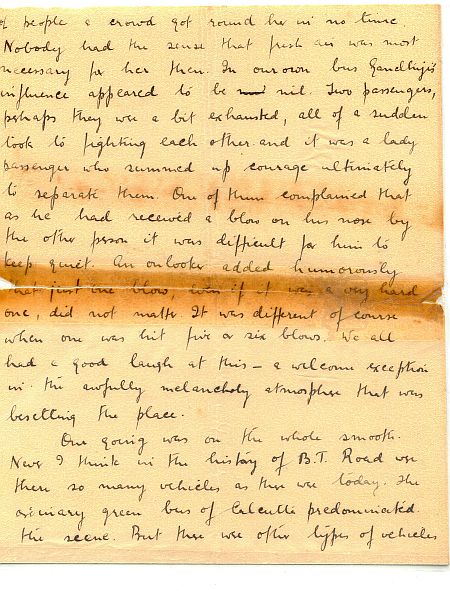
A crowd got round her in no time. Nobody had the sense that fresh air was most necessary for her then.
In our own bus, Gandhiji's influence appeared to be nil. Two passengers, perhaps they were a bit exhausted, all of a sudden took to fighting each other and it was a lady passenger who summed up courage ultimately to separate them. One of them complained that as he had received a blow on his nose by the other person it was difficult for him to keep quiet. An onlooker added humorously that just one blow, even if it was a very hard one, did not matter. It would have been different of course if one was given five or six blows. We all had a good laugh at this - a welcome exception in the awfully melancholy atmosphere that was besetting the place.
Our going was on the whole smooth. Never I think in the history of B.T. Road were there so many vehicles as there were today. The ordinary green bus of Calcutta predominated the scene. But there were other types of vehicles too.
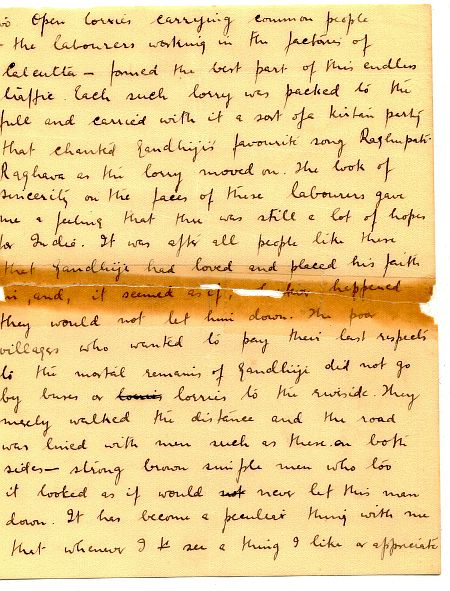
Open lorries carrying common people - the labourers working in the factories of Calcutta - formed the best part of this endless traffic. Each such lorry was packed to the full and carried with it a sort of a kirtan party that chanted Gandhiji's favourite song Raghupati Raghava as the lorry moved on. The look of sincerity on the faces of these labourers gave me a feeling that there was still a lot of hope for India. It was after all people like these that Gandhiji had loved and placed his faith in, and, it seemed as if, whatever happened they would not let him down. The poor villagers who wanted to pay their last respects to the mortal remains of Gandhiji did not go by buses or lorries to the riverside. They merely walked the distance and the road was lined with men such as these on both sides - strong brown simple men who too it looked as if would never let this man down.
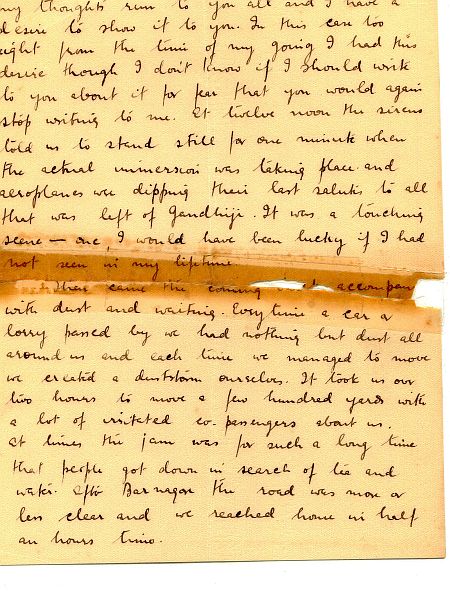
It has become a peculiar thing with me that whenever I see a thing I like or appreciate, my thoughts run to you and I have a desire to show it to you. In this case too, right from the time I was going, I had this desire.
At twelve noon, the sirens told us to stand still for one minute when the actual immersion was taking place and aeroplanes were dipping their last salutes to all that was left of Gandhiji. It was a touching scene - one I would have been lucky if I had not seen in my lifetime.
Then came the return journey accompanied with dust and waiting. Every time a car or lorry passed by we had nothing but dust all around us and each time we managed to move we created a dust storm ourselves. It took us over two hours to move a few hundred yards with a lot of irritated co-passengers about us. At times the jam was for such a long time that people got down in search of tea and water. After Baranagor, the road was more or less clear and we reached home in half an hour's time.

I think I have written more than I should have today. Your very nice letter to Choton (Birendra's younger brother living with him at that time in Calcutta) arrived here yesterday. I could not resist the temptation of reading it. Mashima (Shadhona's mother) is feeling worried again, it seems, on account of cholera in the city. I can hardly express how flattered I feel when I think that in addition to my mother there is somebody else who is constantly thinking about our (Birendra's and his younger brother's) welfare. Enquiring like her if we have taken cholera vaccinations or not. There is actually no need to take them just now for we are not taking any food from outside. Nevertheless, we have decided to follow her wishes. I am writing to her separately, of course, this Sunday.
There is a little request I have to make to you. Can you make your letters to me a little longer? I have already told you what they mean to me.
With pronams to Mashima and Meshomoshay (Shadhona's father) and love to you and Bunu (Shadhona's first younger sister) Chottu (Shadhona's second younger sister) and Jhunu (Shadhona's youngest sister).
Yours
Biru
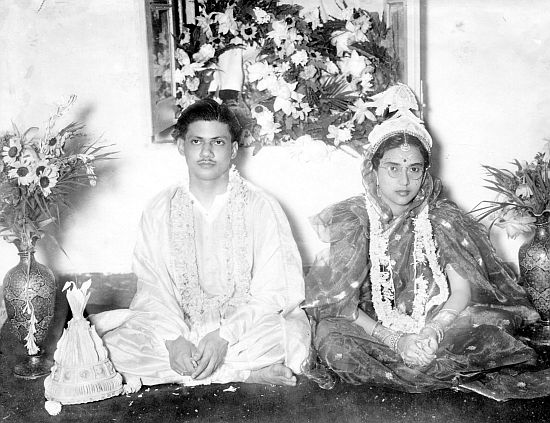
Birendra and Sadhona Chatterji. Wedding. 28 June, 1948, Calcutta (Kolkata).
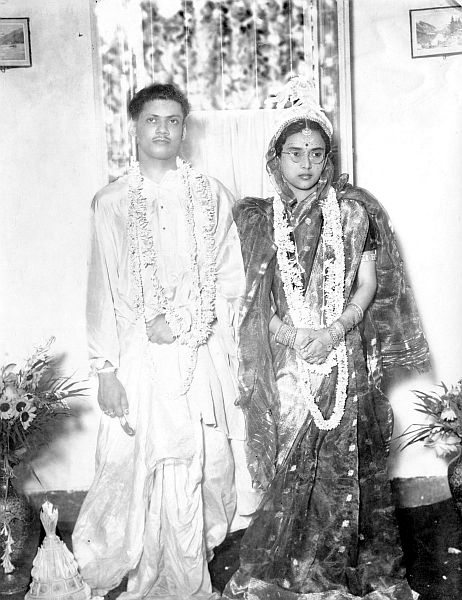
Birendra and Sadhona Chatterji. Wedding. 28 June, 1948, Calcutta (Kolkata)
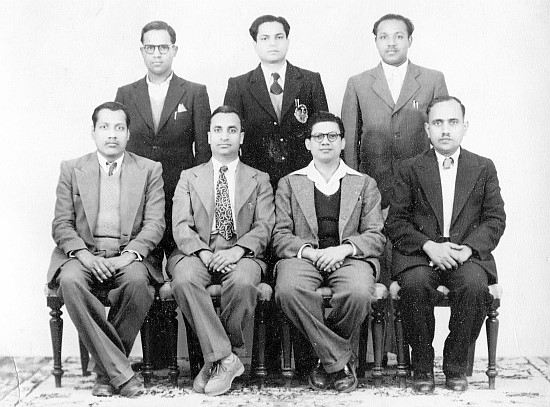
B. K. Chatterji, 2nd from right, front row with fellow young officers of Imperial Bank of India, 1949.
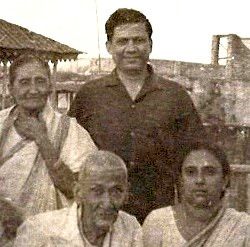
L to R: Janhabi (B. K. Chatterji's mother), Khetra Pada Chatterjee (B. K. Chatterji's father), B. K. Chatterji, Sadhona. Varanasi ancestral house, early 1950s.
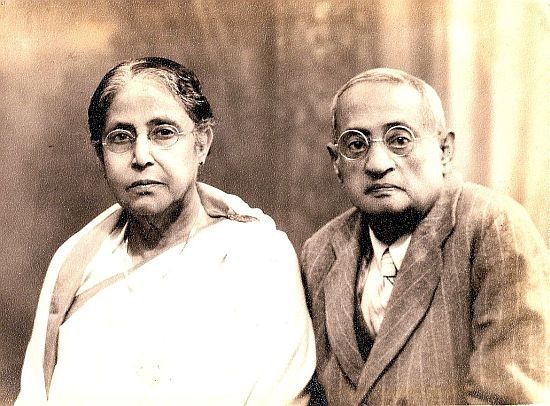
B. K. Chatterji's Nani, Gauri and Nana, Rai Bahadur Akkhoy Kumar Mukherjee who was Civil Surgeon, Darjeeling.1950s
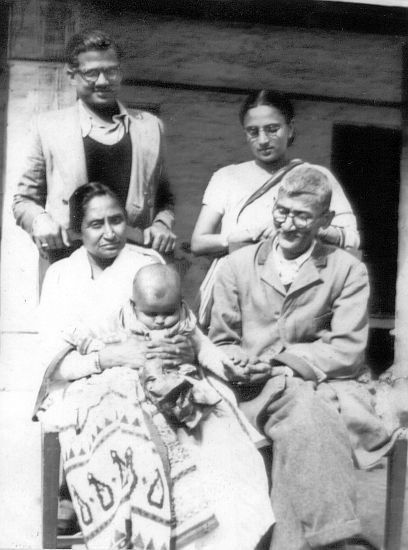
Front: Left, Janhabi Chatterjee with baby Pulok, right, Khetra Pada Chatterjee.
Back: Left, B. K. Chatterji, right, Sadhona Chatterji.
Pulok's Bhaat ceremony, Varanasi ancestral home. Early 1950s.
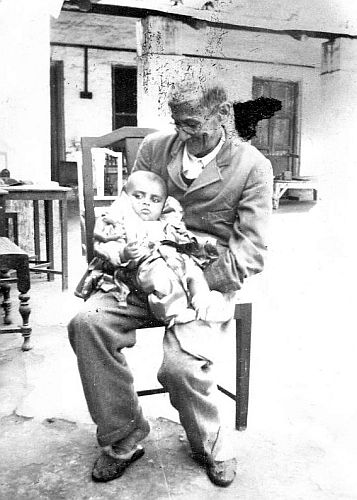
Baby Pulok with Khetra Pada Chatterjee, his grandfather. Varanasi ancestral home. 1951.
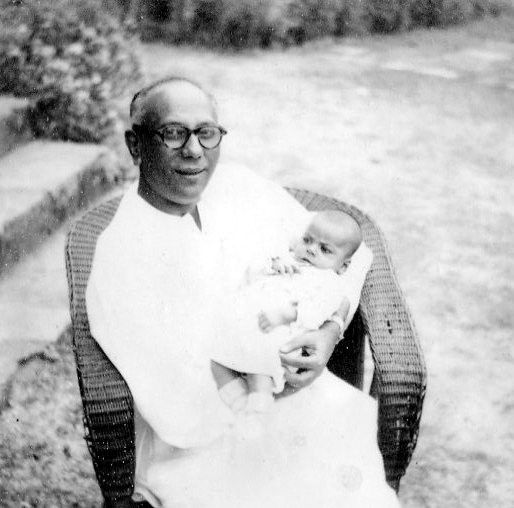
Baby Pulok with H. P. Bannerjee. 1951.
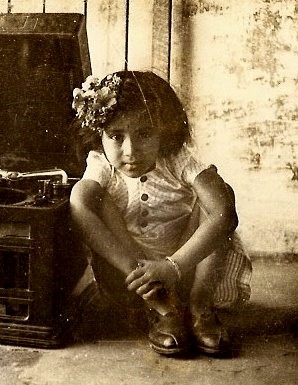
Jaya Srinivasan, Paris, 1952
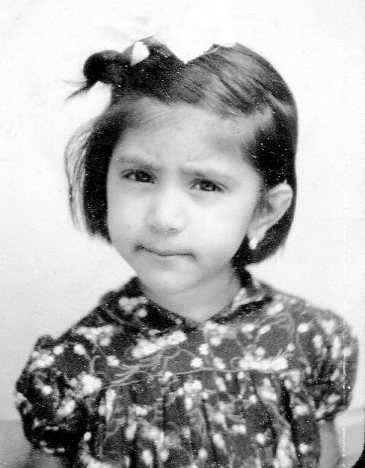
Jaya Srinivasan, Place unknown, 1954.
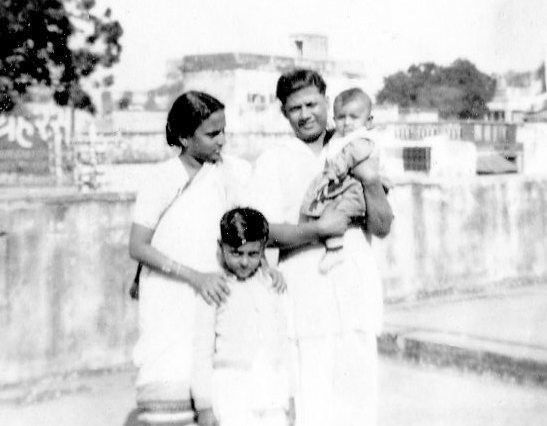
L to R: Sadhona, Pulok, B. K. Chatterji, Rina (in father's arms). Varanasi ancestral home. 1950s.
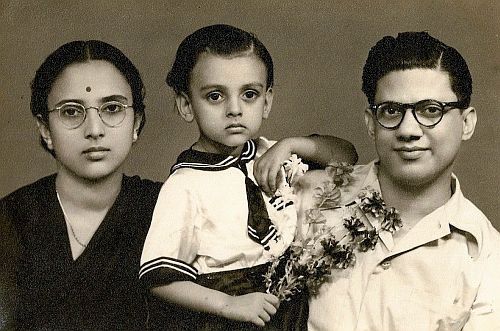
L to R: Sadhona, Pulok, B.K Chatterji. Kolkata. Probably 1954.
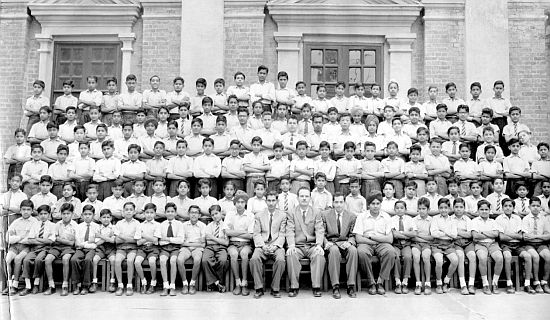
Class VI of St. Joseph's School, Allahabad. Pulok Chatterji, ninth from left, front row. 1962.
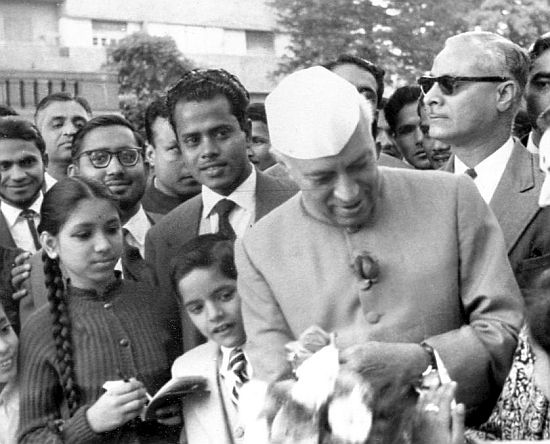
Jaya Srinivasan, extreme left, with Prime Minister Nehru. Cairo 1961. Her father was a diplomat posted at that time in the Indian Embassy in Egypt.
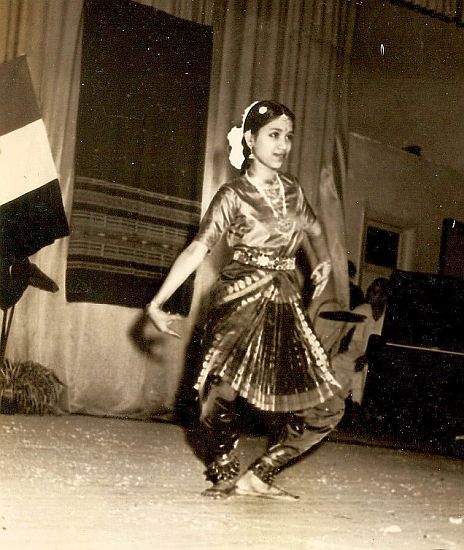
Jaya Srinivasan, performing Bharat Natyam in Cairo. 1963.
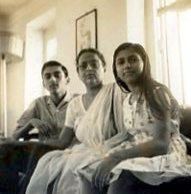
L to R: Pulok, Subarna, Rina. Kolkata ancestral home. 1965.
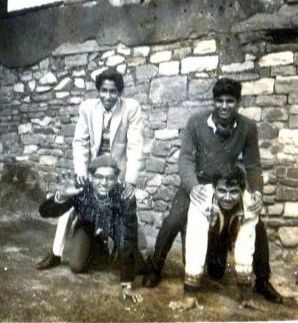
Left, Pulok Chatterji with Neyaz Ahmad on top, right, Yogendra Durlabhji with Adhip Chaudhuri on top.
St. Stephen's College, Delhi, 1967.
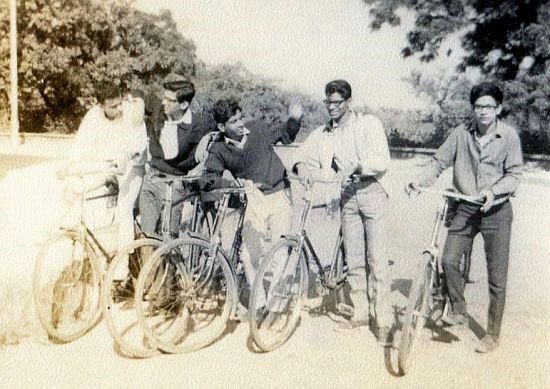
L to R: Name not recalled, Pulok Chatterji, Parthasarthy Sengupta, Piyush (Pandarvani?), Banbit Roy.
Cycling from St. Stephen's College to Faridabad and back on a Sunday, 1967.
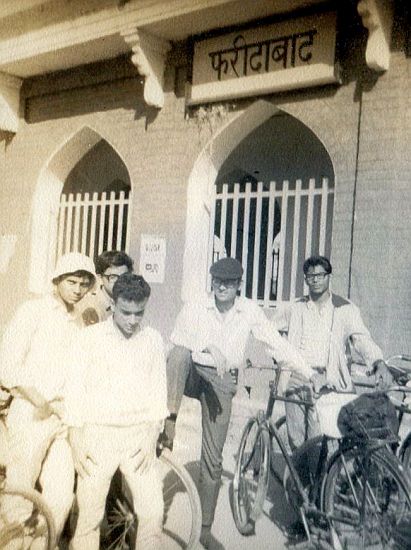
L to R: Partha Sengupta, Banbit Roy (partially hidden), name not recalled, Pulok Chatterji, Piyush Pandarvani. Cycling from St. Stephens College to Faridabad and back on a Sunday, 1967
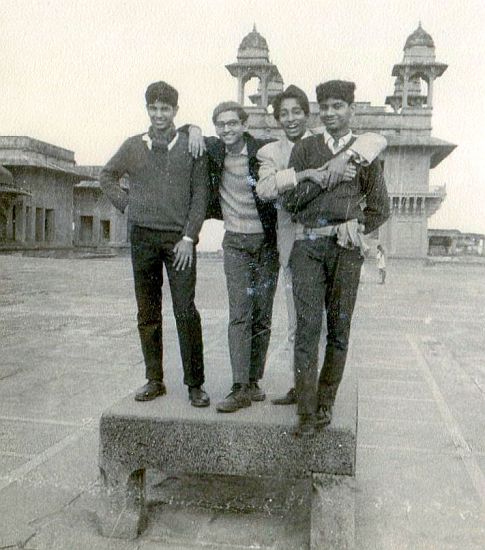
L to R: Adhip Chaudhari, Pulok Chatterji, Neyaz Ahmad, Parthasarthy Sengupta Fatehpur Sikri, 1967.
Weekend visit from St. Stephen's College, Delhi to Agra by train.

L to R: Adhip Chaudhari, Pulok Chatterji, Neyaz Ahmed, Partha Sengupta,. Fatehpur Sikri, 1967.
Weekend visit from St. Stephen’s College, Delhi to Agra by train.
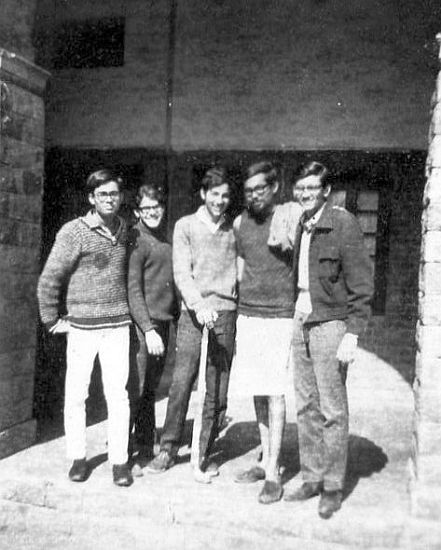
L to R: Subodh Mathur, Amar Kundu, Debabrata Das, Amit Shah, Pulok Chatterji.
St Stephen's College. Delhi. 1967.
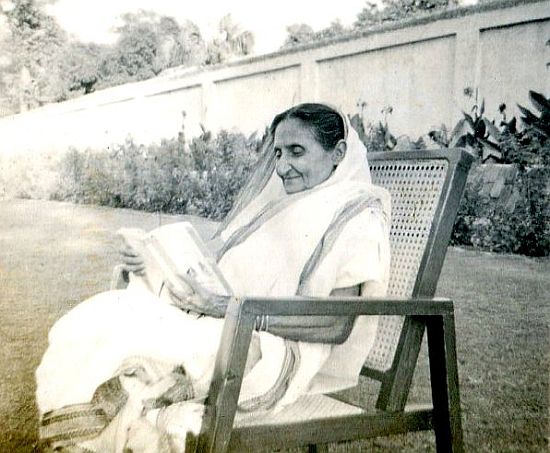
Janhabi Chatterji, mother of B. K. Chatterji, Kanpur, 1969
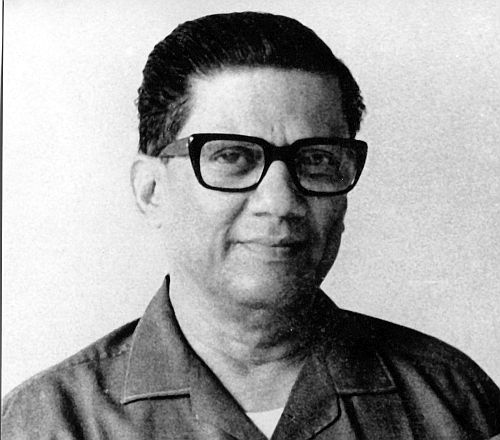
B. K. Chatterji, Chief General Manager, Kanpur Circle, State Bank of India, 1969.

L to R: Shri R. Srinivasan and Shenbagavalli (Jaya’s parents), Hong Kong, 1971
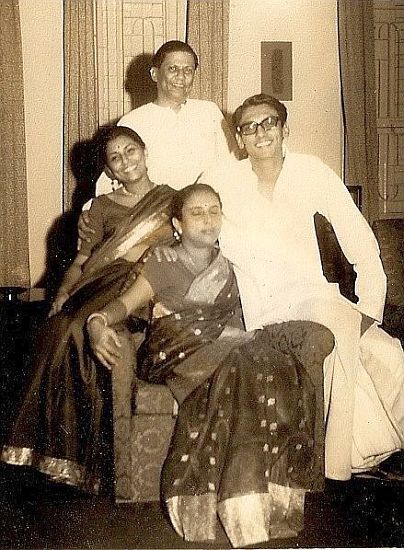
L to R: Rina, Pulok's younger sister, B. K. Chatterji, Sadhona Chatterji, Pulok. Kolkata, 28 June, 1973.
25th Wedding anniversary of B. K. and Sadhona Chatterji
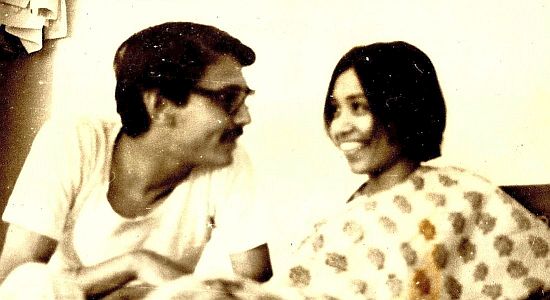
Pulok Chatterji and Jaya Srinivasan, 1973. Delhi.
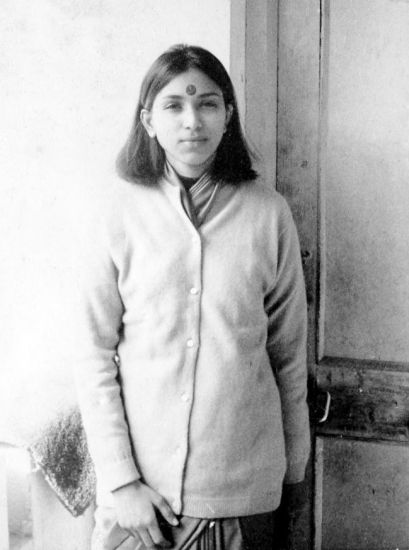
Jaya Srinivasan, Lecturer in Economics, College of Vocational Studies, Delhi. 1973.
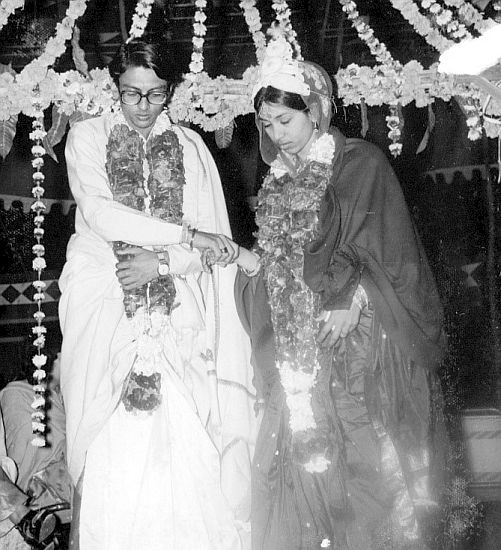
Pulok Chatterji and Jaya Srinivasan. Wedding 25 February, 1975
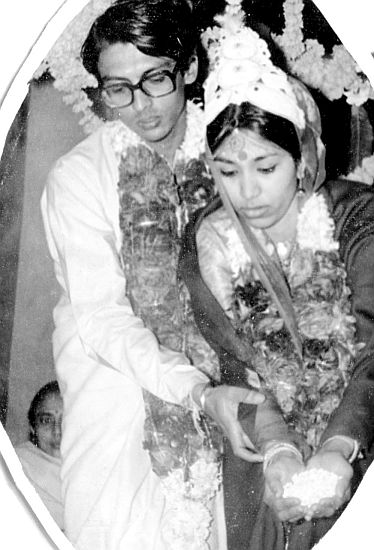
Pulok Chatterji and Jaya Srinivasan. Wedding 25 February, 1975
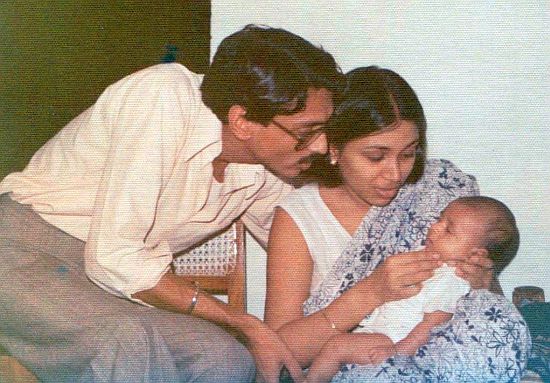
Pulok and Jaya Chatterji with their son, Pushkar, Allahabad, 1978.

Jaya Chatterji with her son Pushkar, Allahabad, 1978
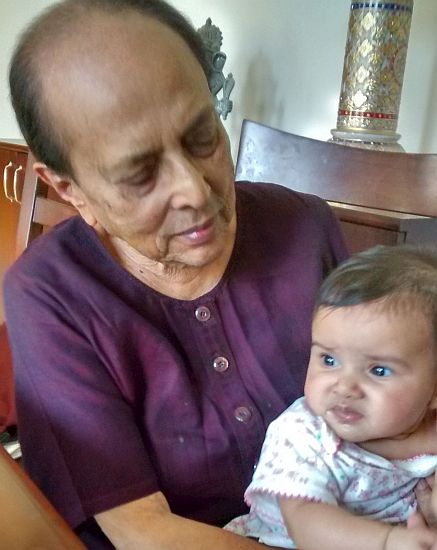
Sadhona Chatterji with her great-granddaughter Aadhira, 2015.

L to R: Shahana (Pulok and Jaya's daughter), Aadhira (our granddaughter, Shahana's daughter), Sudhanshu, (our son-in-law), Jaya, Ved (our grandson and Pushkar-Smriti's son), Pulok, Pushkar (our son), Smriti (our daughter-in-law), Tishya (our granddaughter and Puskar-Smriti's daughter). Dec 2015 at Jaya and Pulok's home in Greater Noida. The last family group photo.
______________________________________
© Pulok Chatterji 2019
Comments
Add new comment